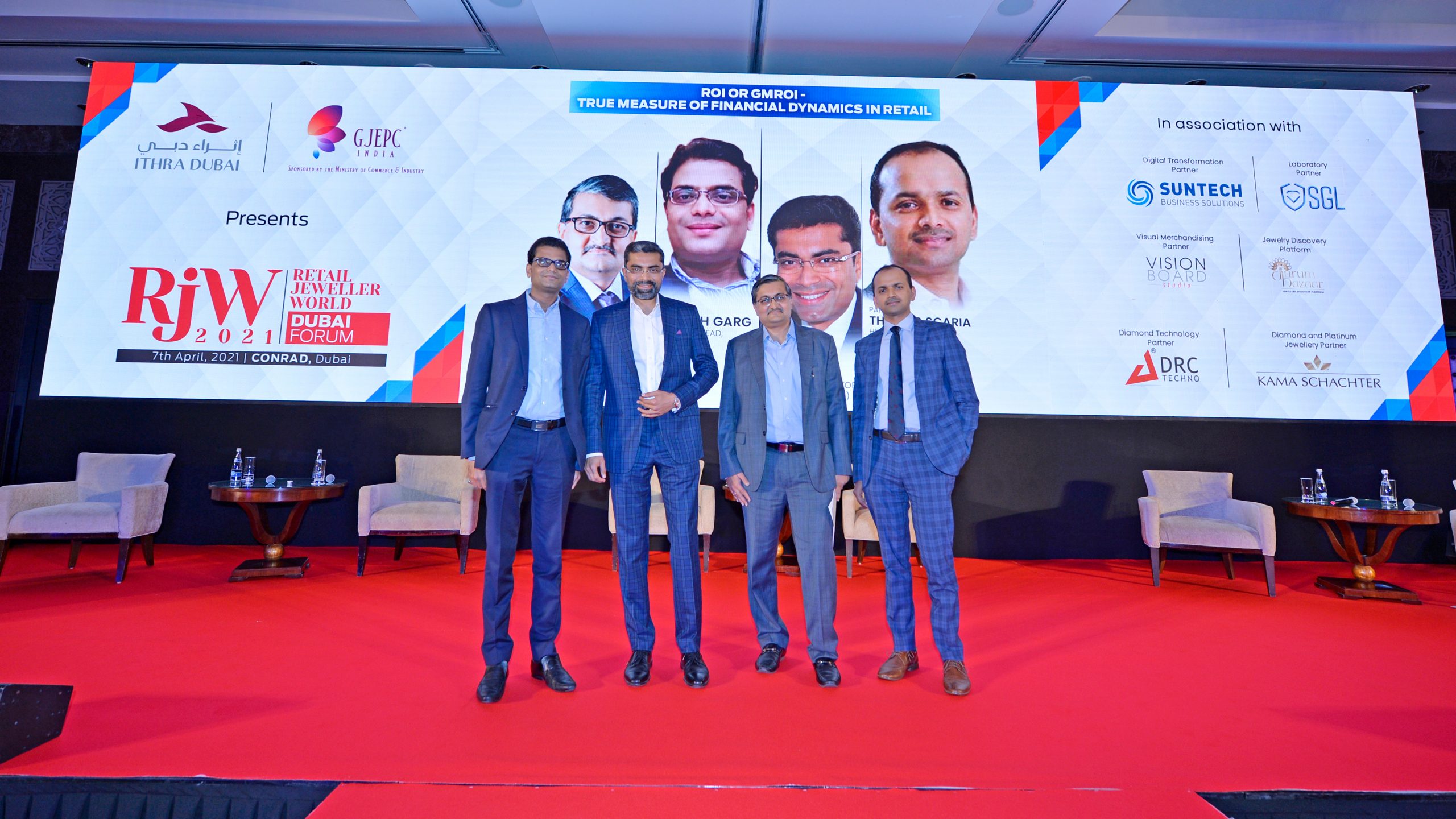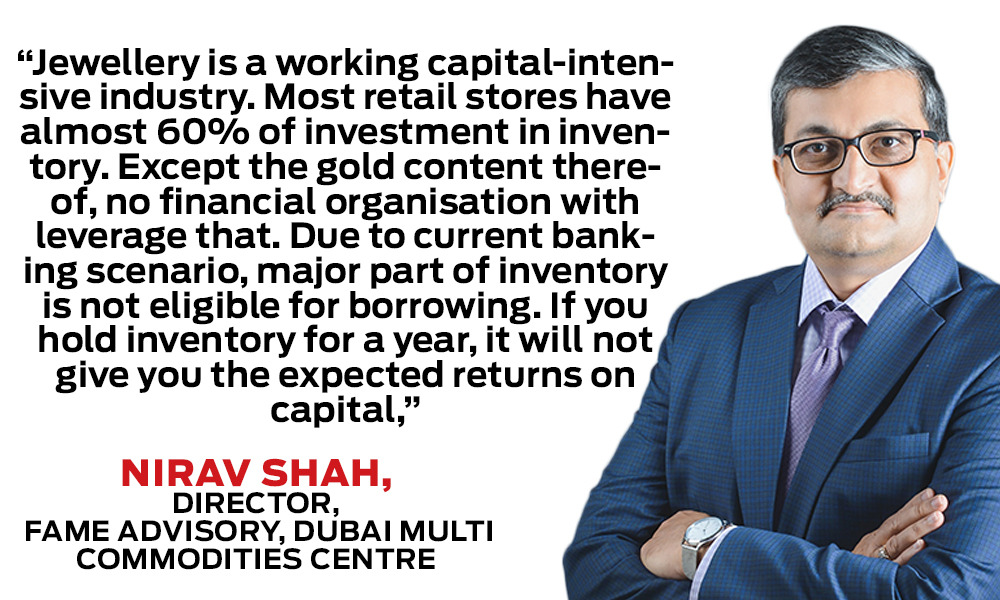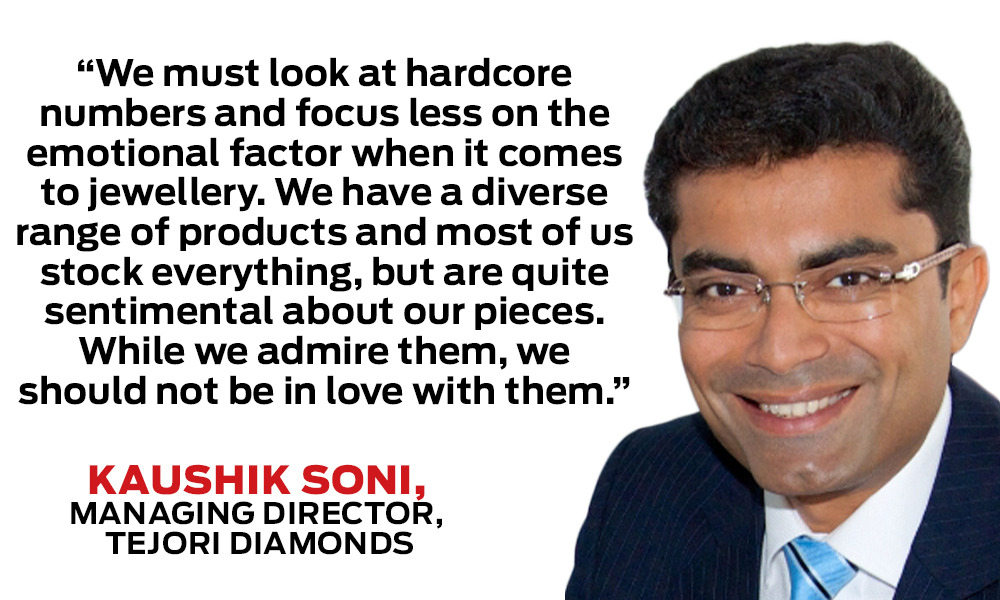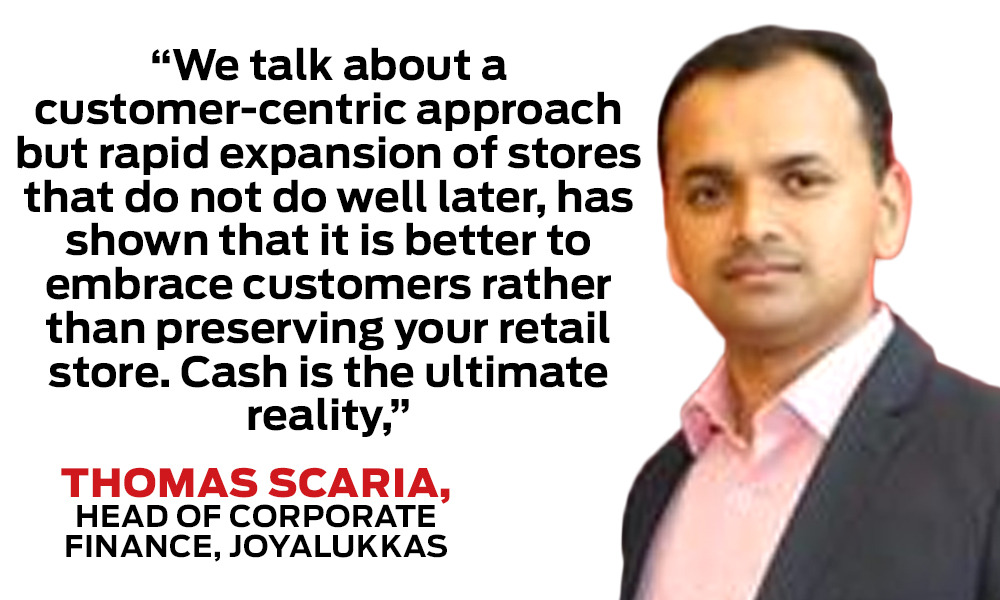RJ Market Watch
Return on investment: The need to move inventory faster and better

The Retail Jeweller World Dubai Forum 2021 saw a very thoughtful panel that touched upon a very sensitive subject when it comes to the industry — the concept of return on investment to inventory
The jewellery industry sailed without any turbulence or unwanted storms in the horizon in 2019. Jewellers were talking about the importance of brick-and-mortar stores, inventory and trends. Then came 2020 with a nasty blow, unimaginable by our standards. The world shut down and so did the gem and jewellery segment. Stores downed shutters and suddenly, we did not know how to sell and what to sell.
The picture was similar in the Middle East. Dubai, a city that thrives on its tourist inflow, took a hit as the skies remained devoid of flights. There were no customers and no tourists.
In a situation like this, how does a jeweller manage his inventory? The Retail Jeweller World Dubai Forum 2021 had an interesting panel discussion on this. Called “ROI or GMROII (Gross Margin Return on Inventory Investment): True Measure of Financial Dynamics in Retail”, the panel was moderated by Nirav Shah, director, Fame Advisory, Dubai Multi Commodities Centre, and the speakers were Ashish Garg, the country head of KGK group, Kaushik Soni, the managing director of Tejori Diamonds and Thomas Scaria, the head of corporate finance at Joyalukkas.
Nirav Shah started with the year that we have just passed. There was an inventory pile-up for many jewellers with low sales, and liquidity issues cropped up. “We then saw participants who are agile change their behaviour. They did a quick analysis, and transformed themselves by liquidating some stock. This also made them better in terms of the cash flow,” he said.

Shah added that it is important to get a measure of the inventory. “It doesn’t make sense as we all want to profit. Traditionally, jewellers kept faith in stocks, which they treat as an investment. But unless it is measured and returns are measured, the exercise is futile. Jewellery is a working capital-intensive industry. Most retail stores have almost 60% of investment in inventory. Except the gold content thereof, no financial organisation with leverage that. Due to current banking scenario, major part of inventory is not eligible for borrowing. If you hold inventory for a year, it will not give you the expected returns on capital,” he said.
The moderator agreed that there is no right answer for what GMROI should be. “It can help you pinpoint the problem areas and re-evaluate and optimise product assortment. We want minimum inventory and maximum movement. So, invest in pieces that move fast. We know the market has a huge inventory pile up. People think this is fine because gold prices have gone up. But we do lose out,” said Shah.
Jewellers should look at a minimum yardstick in order to earn and need to use assets better. A deeper look at inventory is essential and paramount. “You earn a gross margin on a piece, look at the average inventory you hold and for how long . Mix these two together and you get a dynamic concept called gross margin return on inventory investment. Some of your pieces may earn you 50-60% profit. But if you hold it for a year, the returns will not be as expected because there will be external factors affecting it like inflation. It is thus, not just about earning, but also how quickly you are earning,” said Shah. “The same level of inventory, turned twice, gives you double the volume and profitability.”

Garg agreed with Shah on where jewellers should stand when it comes to inventory. “We have a dedicated structure and work on basic principles of KPI. It guides our business and we follow the principle of ROI. We are in a segment where we cannot play around with margins. We focus on inventory as it constitutes most of our working capital. The thumb rule is, if you are not making more money than the market rate, you are just doing charity. We work in an industry where there is a lot of competition. There is always the need to strive to do better and move more inventory. In this variety market, I must decide what will give me maximum returns as not everything will sell. So, I will have to choose what gives me more profit and invest accordingly. A piece might be very close to your heart, but if it is not selling, the entire point stands defeated, he said.

For Soni, it is all about the numbers in the game. “We must look at hardcore numbers and focus less on the emotional factor when it comes to jewellery. We have a diverse range of products and most of us stock everything, but are quite sentimental about our pieces. While we admire them, we should not be in love with them. We need to take decisions so that we do not become redundant. The trends change and we will suddenly find that we don’t have the capital required to stock the pieces needed because we are still not out of the old inventory where the cash-load is tied up. Don’t stick with inventory that no one wants. A lot of retailers have started having a distinct product categorization and they are always measured. Investment is redirected to that product line,” he said.

Scaria was sceptical about the rampant expansion plans that some jewellers undertook in the pandemic. For him, this is a futile exercise if customers are not coming into the stores. “You should have a store in every prominent location in UAE. It is acceptable to have 20-30% of branches not making sales if a fixed number of other stores compensate. This is outdated now. What matters most is customers. We talk about a customer-centric approach but rapid expansion of stores that do not do well later, has shown that it is better to embrace customers rather than preserving your retail store. Cash is the ultimate reality,” he said.
The session ended with all panellists agreeing to the fact that cash is king in the jewellery industry. Unless you are producing some sort of returns on your products, the very reason for running a jewellery business becomes futile.
Courtesy: Retail Jeweller World News


















You must be logged in to post a comment Login